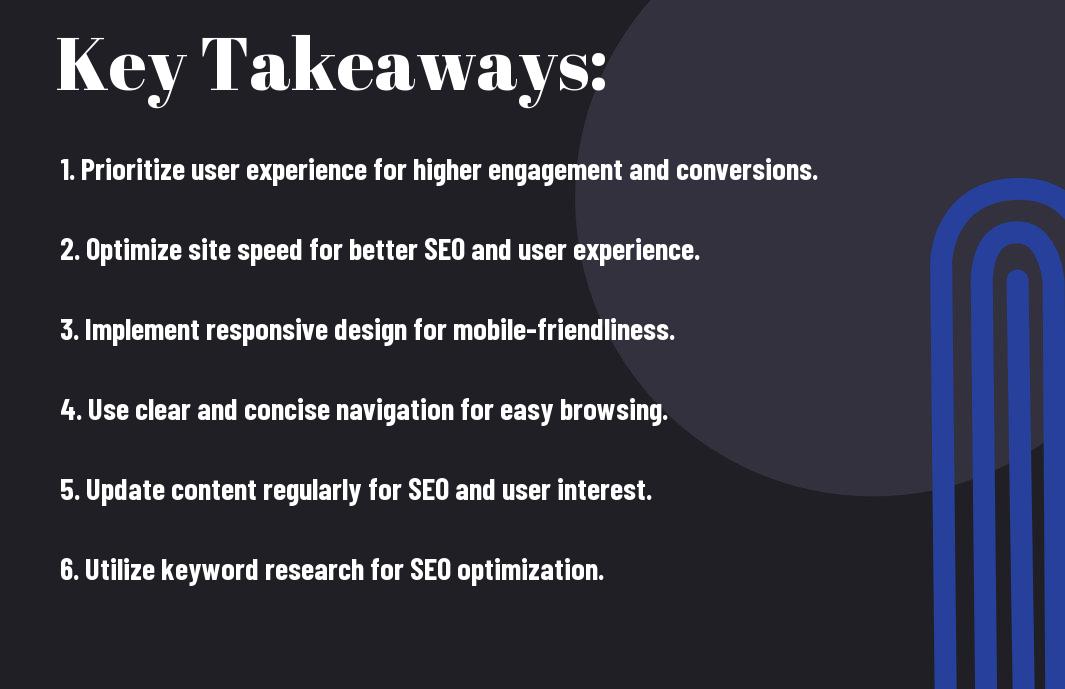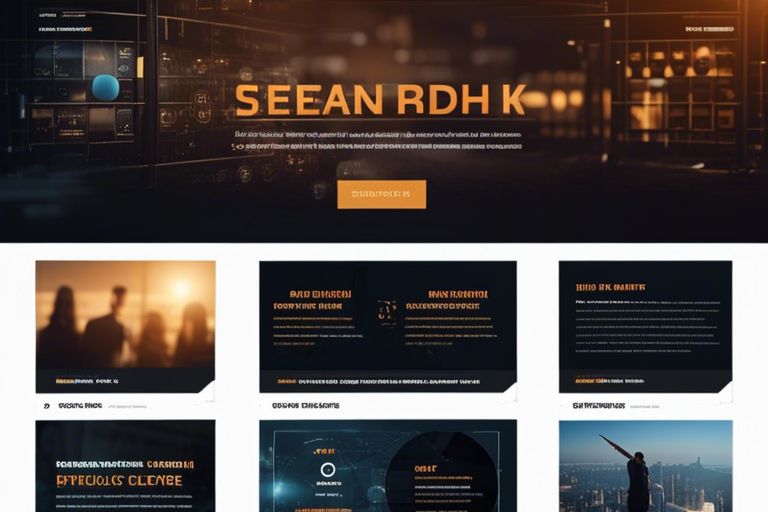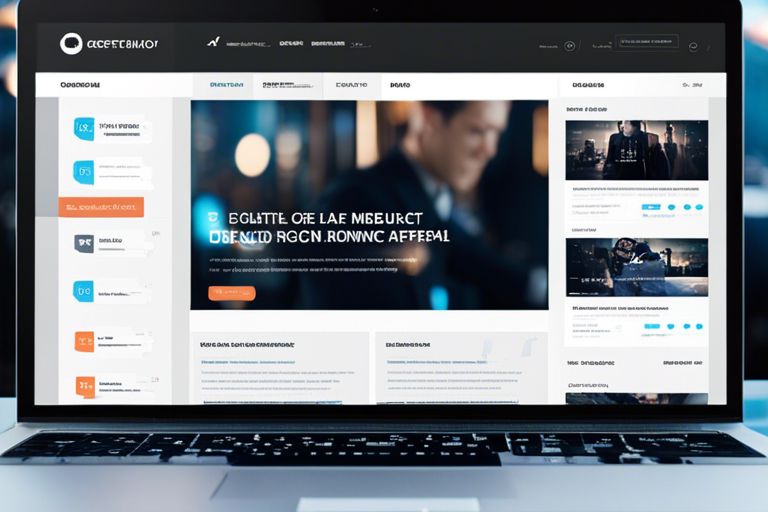Redesigning Your Website – Top Strategies For A Fresh And SEO-Friendly Look

How To Choose The Right Website Design Company For Your Online Portfolio
March 20, 2024
7 Essential Steps For A Mobile-Responsive E-commerce Website Development
March 22, 2024With the ever-evolving digital landscape, it is crucial for businesses to redesign their websites regularly to stay relevant and competitive. A website redesign not only gives your online presence a fresh look but also plays a vital role in improving SEO rankings. To achieve a successful website redesign that is both visually appealing and search engine friendly, it is important to implement top strategies that cater to user experience and optimization techniques. In this blog post, we will explore the key strategies that can help you revamp your website for a modern aesthetic while ensuring it is SEO-friendly to drive more organic traffic and engagement.
Key Takeaways:
- Optimize for mobile: Ensure your website is mobile-friendly to improve user experience and enhance SEO rankings.
- Streamline navigation: Simplify your website’s navigation to make it easy for visitors to find information and improve overall user engagement.
- Update content regularly: Keep your website fresh and relevant by regularly updating content, which can boost SEO performance and attract more organic traffic.

Understanding Your Audience and Goals
Analyzing Your Current Website Performance
With the ever-evolving online landscape, it’s crucial to regularly assess how your current website is performing. Analyzing key metrics such as traffic sources, user engagement, bounce rates, and conversion rates can provide valuable insights into what is working well and what areas need improvement.
Setting Clear Objectives for the Redesign
An effective website redesign begins with setting clear objectives that align with your business goals. By defining specific targets such as increasing online sales, improving lead generation, or enhancing brand awareness, you can focus your efforts and resources towards achieving measurable results.
Plus, clearly outlining your objectives will help guide the design and development process, ensuring that every aspect of the redesign is strategically aligned with your overarching goals. Whether it’s optimizing user experience, enhancing search engine visibility, or boosting conversion rates, a well-defined roadmap will pave the way for a successful website overhaul.
Designing for SEO and User Experience
Mobile-First Design Principles
Your website’s design must prioritize mobile users in order to improve both SEO and user experience. Any modern website should follow mobile-first design principles, ensuring that the site is responsive and functions seamlessly on all devices. Mobile-friendly design not only improves your search engine rankings but also enhances the overall user experience, leading to higher engagement and conversions.
Optimizing Site Structure and Navigation
To enhance your website’s SEO performance and user experience, it’s crucial to organize your site structure and navigation effectively. One should focus on creating a clear and intuitive navigation system that guides users to relevant content with ease. Utilize breadcrumb navigation, internal linking, and a logical hierarchy to help search engines crawl and index your site efficiently.
A well-structured site with clear navigation not only improves SEO by making it easier for search engines to discover and index your content but also enhances the user experience by helping visitors find the information they need quickly and easily.

Content Strategy and On-Page SEO
Many website redesigns can inadvertently harm your SEO efforts if not carefully planned and executed. According to Website Redesign SEO Checklist: Tips to Avoid Big Drops …, it’s crucial to have a solid content strategy in place to maintain or improve your search engine rankings during a website redesign.
Keyword Research and Content Planning
Planning is necessary when it comes to keyword research and content planning for your website redesign. Conduct thorough keyword research to understand what your target audience is searching for and tailor your content to meet those needs. Create a content calendar that outlines the topics, keywords, and publishing schedule to ensure a consistent flow of optimized content.
Implementing On-Page SEO Best Practices
Implementing on-page SEO best practices is crucial to ensure that your website remains visible to search engines and attracts organic traffic. Focus on optimizing meta titles, descriptions, headers, and image alt text with relevant keywords to improve your search engine rankings. Additionally, ensure that your website loads quickly, is mobile-friendly, and has a clear site structure to enhance user experience and SEO performance.
Content is key when it comes to on-page SEO. Ensure your content is high-quality, relevant, and provides value to your audience. Incorporate internal links to other relevant pages on your website to improve navigation and boost SEO. By focusing on creating valuable content and implementing on-page SEO best practices, you can enhance the visibility and performance of your website in search engine results.

Technical Considerations and Performance
Keep up with the latest trends in website design and optimization to ensure that your website remains both visually appealing and search engine friendly. For more tips on this topic, check out Website Redesign: Without Losing SEO rankings in 2024.
Site Speed Optimization
Optimization of site speed is crucial for a successful website redesign. Slow loading times can deter visitors and negatively impact your search engine rankings. Ensure your images are optimized, use browser caching, and consider a content delivery network (CDN) to improve the loading speed of your website.
Ensuring Responsiveness and Accessibility
To achieve optimal performance, responsiveness, and accessibility, make sure your website is mobile-friendly and accessible to users with disabilities. Implement responsive design principles to ensure your site looks and functions well on all devices. Consider using accessible color schemes, alt text for images, and keyboard navigation to enhance usability for all visitors.
Accessibility is not just a best practice; it is a legal requirement in many countries. Failing to make your site accessible could result in lawsuits and damage to your brand reputation. By prioritizing accessibility in your website redesign, you not only comply with regulations but also create a more inclusive and user-friendly experience for all your visitors.

Summing up
Redesigning your website with a focus on both aesthetics and SEO can greatly enhance your online presence. By following the top strategies outlined in ‘The Ultimate Guide to SEO-Friendly Website Redesign Best Practices’, you can ensure that your website not only looks fresh and appealing but also ranks well in search engine results. Remember to optimize for mobile, improve site speed, enhance user experience, and utilize unique content to stand out from the competition. With a well-planned and executed redesign, you can attract more traffic, engage visitors, and ultimately convert leads into customers.
FAQ
Q: Why should I consider redesigning my website?
A: Redesigning your website is important to keep up with the latest design trends, improve user experience, and maintain a modern and fresh look. It can also help boost your SEO efforts by optimizing your site for search engines.
Q: What are the key strategies for redesigning a website?
A: Some key strategies for redesigning a website include conducting a website audit to identify areas for improvement, setting clear goals and objectives for the redesign, creating a responsive design that looks great on all devices, optimizing site speed for better performance, and implementing SEO best practices.
Q: How can I ensure that my redesigned website is SEO-friendly?
A: To ensure that your redesigned website is SEO-friendly, focus on creating high-quality, relevant content, using proper heading tags, optimizing images with descriptive alt text, improving site navigation for better user experience, and implementing a solid internal linking structure.
Q: How can I maintain my website’s SEO ranking during the redesign process?
A: To maintain your website’s SEO ranking during the redesign process, make sure to set up proper 301 redirects for any changed URLs, keep your sitemap updated, monitor your site for any errors or broken links, and avoid changing important on-page elements like title tags and meta descriptions unnecessarily.
What are some common pitfalls to avoid when redesigning a website?
A: Some common pitfalls to avoid when redesigning a website include neglecting mobile responsiveness, ignoring SEO best practices, making drastic changes to your site structure without proper planning, failing to test the new design across different browsers and devices, and not seeking feedback from users throughout the redesign process.


